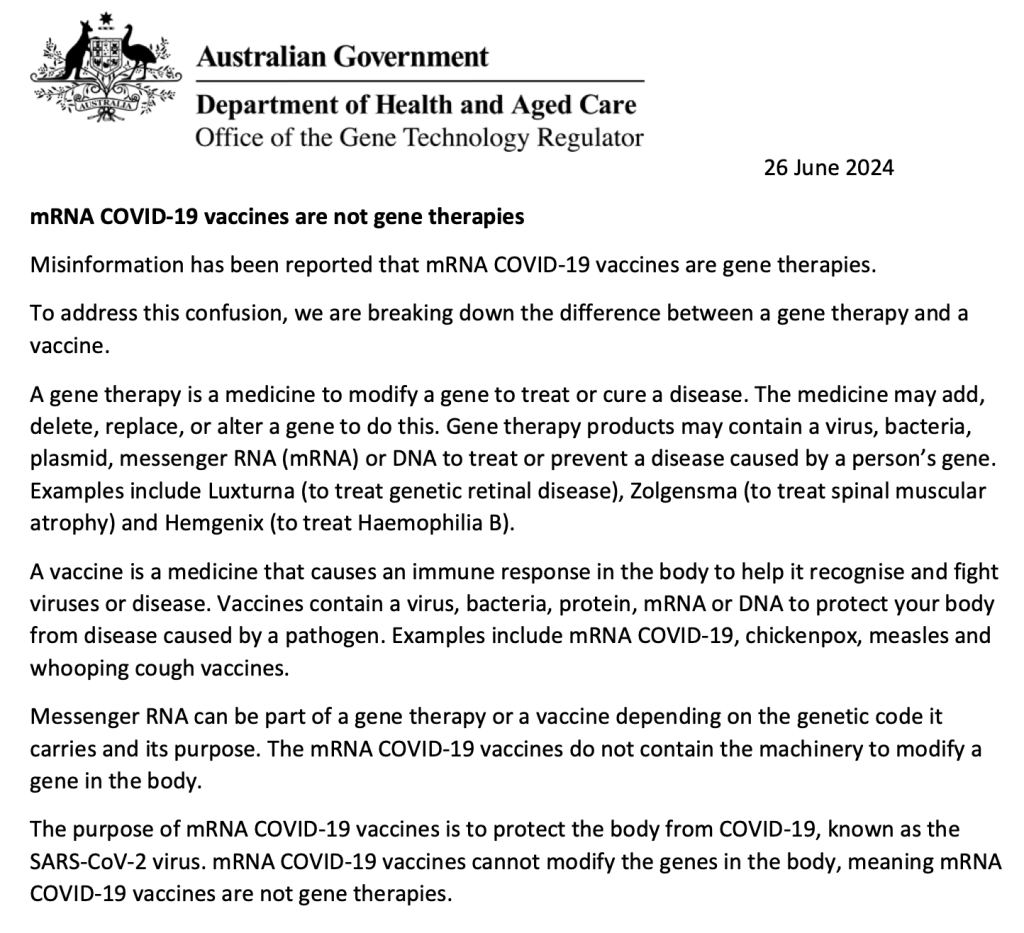Back on 7 December, The Skeptic Zone and Why Smart Women podcasts blended to present a unique live episode at The Occidental Hotel in Sydney. Billed as the Why Smart Women Zone Podcast the show featured Why Smart Women host Annie McCubbin with Sue Ieraci, Kate Thomas, Jessica Singer and Richard Saunders. Lara Benham was the MC. Video of the event is available here.
Question-time revealed irony, as the first questioner could benefit from subscribing to Annie’s Why Smart Women podcast. An anti-vaxxer, she seemed to have a plan to accuse, mock, embarrass or verbally pummel skeptics (those who pursue evidence and the scientific method in reaching conclusions), for not actually being “sceptical” (those choosing doubt, cynicism or evidence denial for the sake of it). Where one genuinely believes medical research is flawed, harm has been ignored or “they” stand to benefit, the latter is not uncommon. You can catch that “question” at the end of the video here (although the person is off camera) or listen to the audio embedded below:
Anti-vaccine activist shares her views on science and skepticism – ©️ The Skeptic Zone.
In fact thirteen years ago I wrote Skepgoating: why anti vaxxers need to devalue skepticism. The notion of belittling skeptics this way, peaked for a time with all the lethality of wet cabbage. Ordered to change their misleading name, in February 2014 the Australian Vaccination Network initially chose the Australian Vaccination-Skeptics Network, before swapping “skeptics” for “risks”. Occasional tirades of what “real sceptics” should be were rare until COVID-19 had its inevitable effect on the spread of misinformation. Failure to grasp the history of mRNA technology and research, blended with the failure to appreciate the volume of money and talent devoted to combat a dangerous global pandemic.
In 2021 Vaxxed producer and CEO of the Informed Consent Action Network, US anti-vax profiteer Del Bigtree boasted that for the vaccine disinformation machine, the pandemic was “a dream come true”. He was right. That lingering confusion was massaged and still remains. I’m not just assuming the antivax attendee at the Occidental believes unverified doubt, cynicism or evidence denial is the correct mindset. When pushed for her question, she loudly confessed:

Why are you so self-satisfied?
Why do you call other people “cookers”?
Why do you de-platform people? This is not science.
You are a shame on skepticism.
You’re not real skeptics!
I won’t be called a “cooker” by people like you.
You’re a bloody disgrace to skepticism.
Did you ever read RFK’s book?
She actually opened her tirade, seeming to be outraged that skeptics supported the evolving critical approach in mainstream media. When pressed, her question was basically, “In future are you going to continue to crush out the other side and never examine your assumptions? Did you ever examine your assumptions? Did you ever read RFK’s book?”. (Citing RFK evoked laughter and applause). Nonetheless, this was more accusation than question and her queries demonstrated absolutely no understanding of skepticism. She also accused the panel of being “self satisfied” that media outlets had suppressed disinformation, and alleged people had been injured and died because of such “silencing”, by the media.
Of course, here again I must stress of the 14 deaths causally linked to COVID-19 vaccines in Australia only one is linked to the mRNA vaccine. The rest are related to Astra Zeneca. The evidence is not on her side. Period. Perhaps nothing confirmed this greater than her demand, “Did you ever read RFK’s book?”. Titled The Real Anthony Fauci the book champions conspiracy theories about the COVID-19 pandemic, promotes HIV/AIDS denialism and contends Fauci abused power for 30 years. Science Based Medicine labelled it a “conspiracy theory extravaganza”. Little wonder then, that our questioner seemed to argue that real science involved, not facts, experiments or scientific consensus, but questioning of assumptions, and basing evidence on opinions.
There are a number of specific claims in the tirade one needs to address and I’d like to do so, away from the noise of her Gish gallop. This woman claimed to once work for the Daily Mail and wrongly claimed an editor had urged reporters to make anti-vaxxers “sound crazy”, and that this was caught on video. A leaked video has been uncovered on the data-mining disinformation site, Natural News, which is really all one need know about whether the editor did the right thing. This was July 2021 when the vaccines were indeed saving lives and badly needed. Antivax rhetoric was then dangerous conspiratorial nonsense, pushed by trolls filling comment sections of news publications.
The woman said she herself also once thought anti-vaxxers were “crazy”. In fact, in the video the editor described them as “intelligent, otherwise well-educated people”. He added, “If we’re doing something that’s airing anti-vax views make sure that we’re also dismissing them… (‘is that the right way to put it?’ he asks someone off camera)… make sure we’re rubbishing their ridiculous claims”. I completely condone his advice. He criticises the anti-vax claims but not the person making those claims. He never suggested a journalist should make anyone “sound crazy”.
More so as an aside, on 19 December 2011, myself and reasonablehank had seperate complaints upheld against the ABC by ABC Audience & Consumer Affairs, for allowing Meryl Dorey to twice mislead radio audiences about the pertussis vaccine. Suffice it to say there are consequences for not educating your journalists about anti-vaccine disinformation. This editor clearly did the right thing.
She then challenges the panel about not questioning their “own assumptions”. This is absurd, as to a person, the panelists base their conclusions on research and evidence. Assumptions are not entered into. In the same breath she claims such assumptions led to injuries and deaths due to “mRNA and DNA genetic-based vaccines”. This last bit is a word salad that suggests she’s recently been reading up on the false claims that mRNA vaccines are polluted with residual DNA. On the other hand actual gene-based vaccines deliver instructions into the cell to promote synthesis of antigens. I looked at related myths such as “turbo cancer” caused by mRNA vaccines polluted with DNA residue in this post, last March.
Shortly after, she calls mRNA COVID-19 vaccines “repurposed genetic therapies”. Such therapies do target disease conditions caused by problems in human DNA. Think cystic fibrosis, haemophilia. Distorting this therapy is popular in anti-vax circles and is a refinement of the initial myth that mRNA vaccines enter the cell nucleus and damage DNA: itself an example of outright evidence denial. A comprehensive statement from the Australian Government’s Office of the Gene Technology Regulator (OGTR) published on 26 June 2024. Former Senator Gerard Rennick led many disinformation campaigns on the topic, leading to the OGTR publishing the unambiguously titled, mRNA COVID-19 vaccines are not gene therapies below:

Of course we also heard that the mRNA COVID-19 vaccine “was tested for 2.5 months and is a medical product like any other”. Just as mRNA vaccines are not “repurposed” in the derogatory sense this woman intended, mRNA technology for vaccines actually began in the 1970s. Mice were jabbed with mRNA influenza vaccines in the 1990s and humans took part in mRNA rabies studies in 2013. As nanotechnology developed, the idea of using lipid nanoparticles to carry mRNA and its vital information into cells, was researched, developed and eventually used with an Ebola vaccine on guinea pigs in 2017. Here, Return on Investment had an impact on development, as Ebola affects only a few African countries and yields minimal cases in the USA. Then COVID hit and changed the commercial reality for mRNA vaccines. I recommend this page from John Hopkins to learn more about mRNA vaccine development.
Whilst it may sound catchy to refer to “2.5 months” as an insufficient timeframe to develop a vaccine, this ignores that vaccine development takes time, money and research. When the COVID pandemic hit, global investment was enormous and nations worked in partnership, pulling knowledge and experts together as never before. The genetic sequence of COVID-19 was discovered and within two months human testing began under extremely strict regulation, increasing the time for approval. Emergency authorisation required a minimum of 2 months follow up data. Development further demanded that subjects were monitored for 2.5 months after the second dose. Then came Phase III trials, involving “tens of thousands” of subjects and it is these trials that focus on safety and efficacy. In Australia, the TGA were doubly pedantic when it came to checking the trial data it was presented with. So no. The mRNA COVID-19 vaccine did not take 2.5 months to develop, but rather decades of research topped off with a global effort. Safety monitoring continues today.
Moving on, let me assure you medical products are all vastly different, and not as the woman alleged at one point “like a car or a bus”. Indeed Australia’s Therapeutic Goods Administration (TGA) have a rigid risk-based assessment and rating system for regulated medical products (therapeutic goods), focusing on potential for harm. More so, is a vaccine like a pain killer or is a pain killer like a pace maker (a medical device), or the pace maker like a bilary shunt and is that shunt a product like a titanium hip and the hip like a chemotherapy drug, a vasodilator or an external fixateur? The terms “product” and “medical product” are poles apart.
In that the vaccine did what it was supposed to do within the predicted risk-benefit ratio, even including unforeseen side effects, it is an effective medical product, still saving lives. Clearly, her use of “product” (and “car” and “bus”) was attempting to disparage mRNA vaccines, but in my mind this didn’t advance her argument. Rather it underscored her ignorance and reflects the pitfalls of “doing your own research”. More ignorance was highlighted by her bias in accusing skeptics of being “the magical thinkers”, suggesting skeptics think “nothing can be wrong with [the mRNA vaccine] because it’s got the magical word vaccine.”
At one point the woman promoted emeritus professor Robert Clancy, referring to his book on the subject. In fact he was the primary editor and contributor. Other contributors are anti-vaxxers Maryanne Demasai and John Campbell. Demasai’s work has long attracted criticism, including her 2016 suspension following an internal review into Catalyst at ABC. More recently she targets mRNA vaccines linking them to the myth of “turbo cancer”. Clancy earned himself ample criticism during the pandemic for promoting hydroxychloroquine and ivermectin. He was championed by Craig Kelly and targeted mRNA vaccines as “genetic treatment”. Newcastle University distanced itself from Clancy, and the vice-chancellor stressed Clancy was not “a subject matter expert on COVID-19”.
The woman’s appeal to authority was embellished when she boasted she had walked up Machu Picchu with Richard Dawkins. Yet there’s no evidence Dawkins ever made such a trek. I can’t reject her claim that she “corresponded with Rob T. Carroll of The Skeptics Dictionary in the 90s”. Rather, these events don’t constitute evidence for her argument. Or even, as she contended, protect her from being labelled a “cooker”.
Finally, and most offensively, was the accusation “[Skeptics] are the reason my neighbour’s kid can’t play sport because he’s got a damaged heart. Your attitude got into the newsrooms and we dismissed everything…”. As Richard Saunders later notes on the podcast, skeptics have no such influence over mainstream media. Yet the assumption by the anti-vaccine pressure groups that conspiracies are being suppressed by those who seek evidence, is their go-to blame tactic. This warped thinking is what maintains conspiracy theories. The reality is that myocarditis from COVID-19 infection is consistently rated as far more likely and severe than from the vaccine.
So finally, finally, we may conclude with an answer as to why this woman felt she was being referred to as a cooker. They have worked very hard to become such, and cooker conduct was on loud display during the above tirade.
Updated: 6 January 2026









